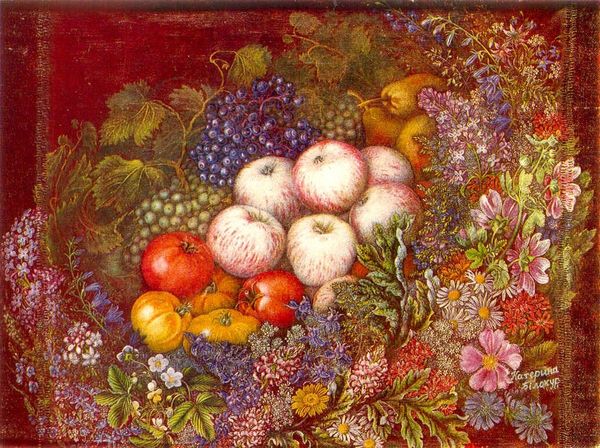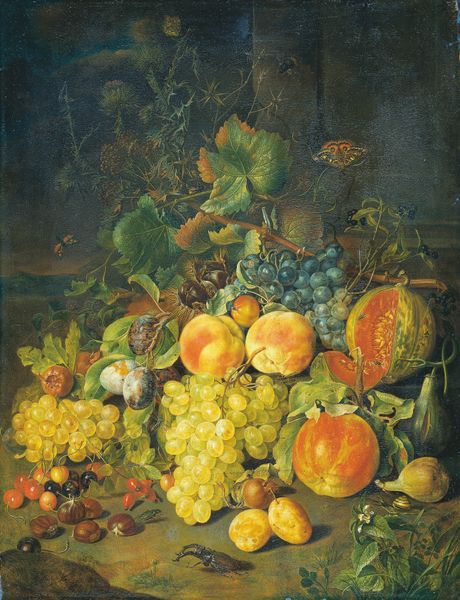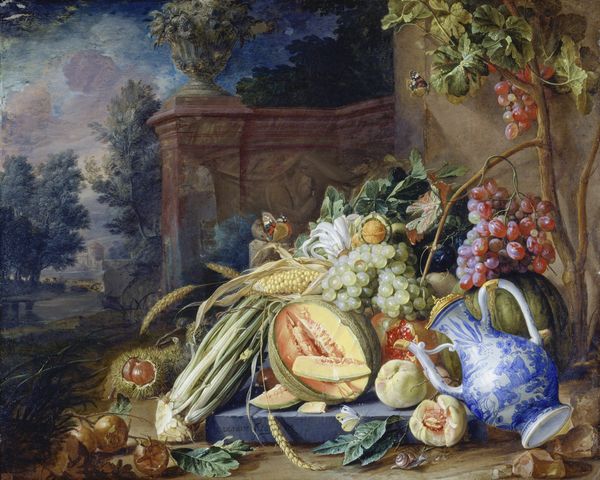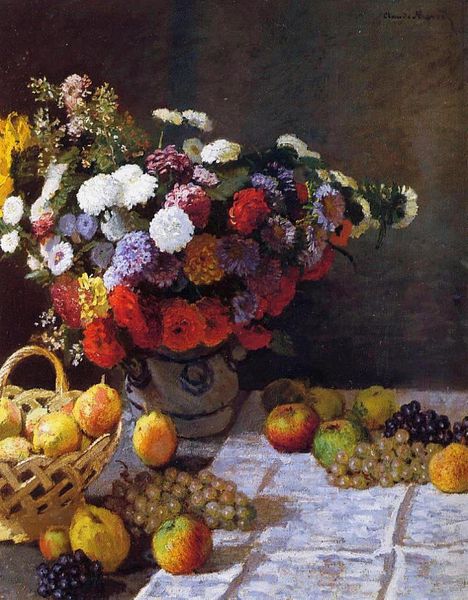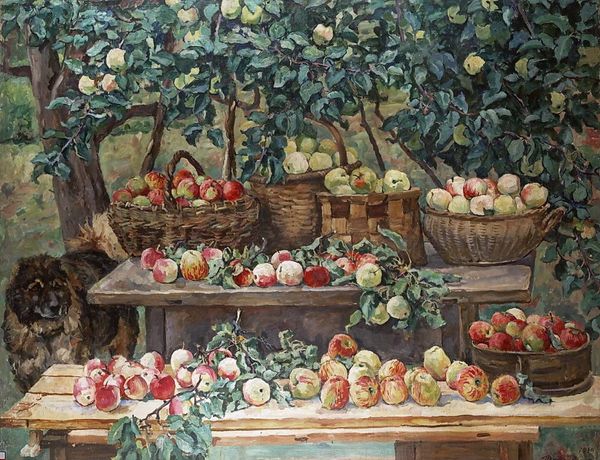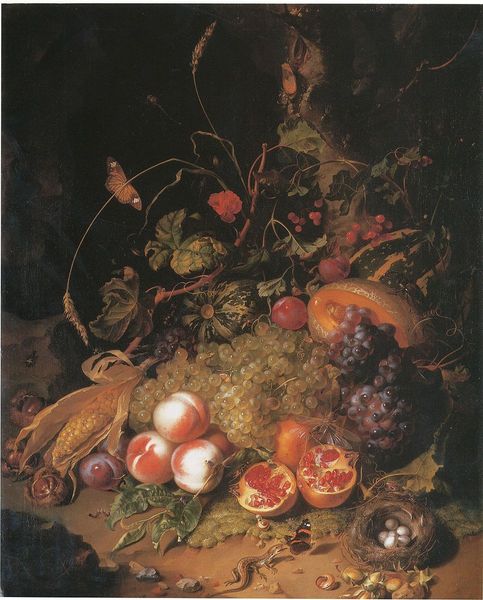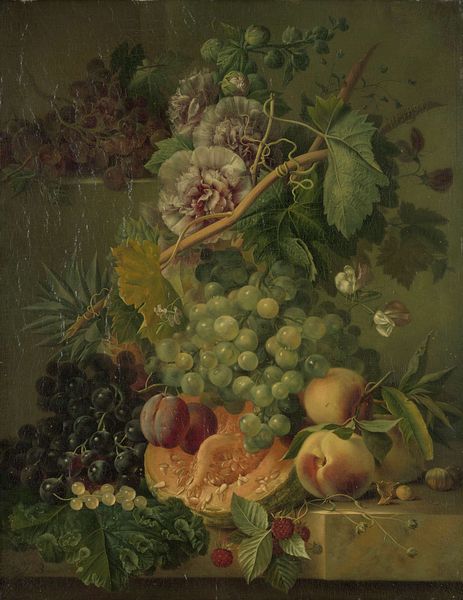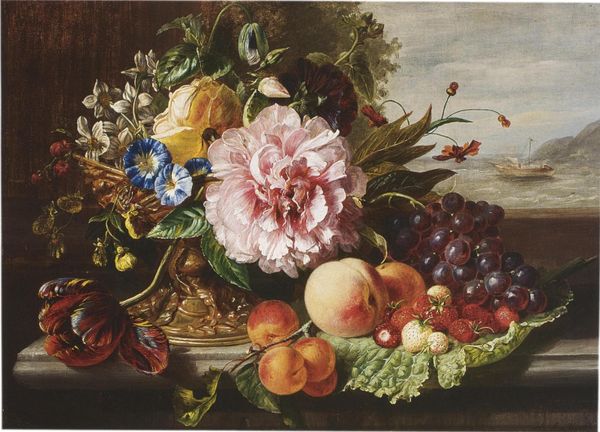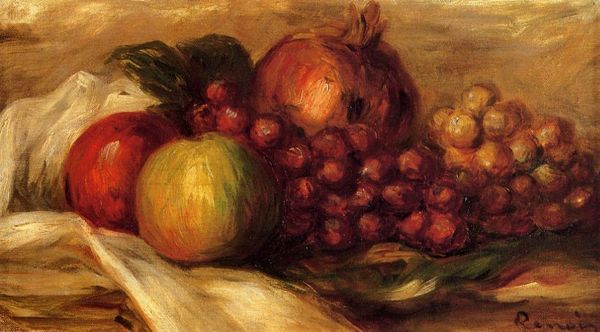
tempera, painting, photography
#
still-life
#
red and green
#
table
#
tempera
#
painting
#
flower
#
photography
#
fruit
#
folk-art
#
plant
#
realism
Copyright: Kateryna Bilokur,Fair Use
Editor: This is Kateryna Bilokur's "Hello Harvest," a tempera painting from 1946. It's a dense, abundant still life… it almost feels like a celebration. What do you see in this piece, beyond the surface level? Curator: It's interesting that you pick up on that celebratory feeling. Bilokur painted this in the post-war period, a time of immense upheaval and forced collectivization in Ukraine. Consider the tradition of still life painting as inherently tied to displays of wealth and bounty, usually commissioned by privileged classes. What happens when an artist like Bilokur, from a rural, peasant background, engages with that tradition in the context of Soviet Ukraine? Editor: So, it's not just about pretty fruit? It’s a statement of some kind? Curator: Exactly. This abundance takes on a defiant tone. The incredibly detailed realism – almost hyperrealism – with which she depicts the harvest speaks to a deep connection with the land and its yields. Consider the symbolic power of representing the earth's abundance at a time of imposed scarcity and control. How does it function as an act of resistance? Editor: So, the act of meticulously painting this plentiful harvest becomes a quiet rebellion? Almost like reclaiming a sense of identity through art. Curator: Precisely. And think about Bilokur's biography. She was self-taught and faced considerable obstacles as a woman artist in a male-dominated art world and a society suspicious of individual expression. "Hello Harvest" becomes an assertion of her artistic vision and cultural identity, pushing against multiple forms of marginalization. Editor: That context really transforms how I see this painting. It’s no longer just a still life; it's a powerful statement about resilience and cultural identity. Curator: Indeed. By examining the historical and social forces shaping the artwork and the artist's life, we can gain a richer, more nuanced understanding of its meaning and significance. Editor: I’ll never look at still life the same way. Thanks for sharing that perspective!
Comments
No comments
Be the first to comment and join the conversation on the ultimate creative platform.
